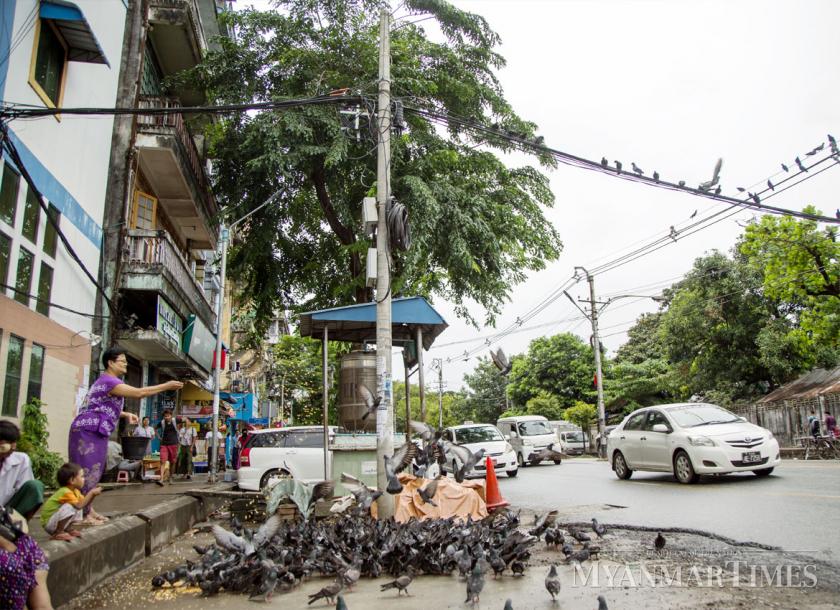Companies opt to relocate plants to Southeast Asia to cut labor costs.
The label of “made in China”, which was synonymous with the global solar industry, is in danger of fading out as a growing number of firms move their plants overseas to skirt spiralling import duties.
Hit hard by the steep tariffs imposed by the United States and the European Union and coupled with rising labor costs in coastal cities, major solar panel manufacturers such as Trina Solar Ltd and Jinko Solar Holding Co Ltd are speeding up construction of factories in countries like Thailand and Malaysia.
Experts said it has already become a trend that more Chinese companies are moving their manufacturing bases abroad, especially to Southeast Asia, which will have a positive impact on local solar cell industries.
Though it is only a fraction of China’s solar capacity which is expected to reach 40 gigawatts this year, the Southeast Asia solar industry is growing rapidly.
During the first six months of the year, Southeast Asia has attracted 4.5 gW of solar power generation capacity from China, among which solar capacity in Thailand reached 2 gW and that in Malaysia more than 1.5 gW.
Trina Solar, a photovoltaic modules maker based in Changzhou, Jiangsu province, has set up regional headquarters in Southeast Asia, where demand for solar panels is rising steadily.
In May, the company started the construction of its factory in Thailand with an investment of $160 million, aiming to boost its solar panel output in the global market.
Trina Solar’s plant in Thailand is expected to be put into operation at the end of this year or early next year with an annual capacity of 700m W for solar cells and 500 mW for solar panels.
A solar panel, or module, consists of a series of silicon cells which are joined together to form a circuit.
The company, which was founded in 1997, has also cooperated with a local Malaysian company for original equipment manufacturing to develop 500 mW of solar modules as part of the company’s localization strategy.
“Southeast Asia has become a very important regional manufacturing center for us, because the location of these plants are closer to emerging markets and thus it will boost our sales there,” said Gao Jifan, chairman and chief executive officer of Trina Solar.
The solar maker had widely sold its products to Europe, the world’s largest solar market, as well as the US, but it has shifted its focus toward emerging markets to balance out the difficulties in the traditional markets, putting more efforts on the domestic market in recent years, where Chinese solar companies can enjoy more government subsidies.
“This is something that we have been doing during the past few years and the future uncertainty has just accelerated that process,” he said.
Experts said exports from China account for 70 percent of the world’s solar products, but some of these companies have turned to emerging markets after countries like Germany, Italy, Spain and the US have claimed that Chinese solar firms have been selling panels below their market value, imposing higher tariffs on solar products made in China.
Gao said the company will search for places in overseas markets that are suitable for manufacturing, original equipment manufacturing or outsourcing to increase solar capacity as a quick response to the market.
“I think this manufacturing model can be copied in other countries as well, because it is closer to our target markets and the production costs are relatively low,” he said.
Besides markets in Southeast Asia, solar industry in India and Latin America has also the potential to become the next manufacturing hub for Chinese solar firms.
Lyu Jinbiao, vice-president of GCL-Poly Energy Holdings Ltd, said the company plans to build a photovoltaic industrial park in overseas markets.
“The trend is obvious that more Chinese solar firms are going global to source solar cells to offset mounting pressure in the traditional solar markets where they fear there might be further profit-cutting by future action on dumping duties,” he said.
Efforts by Chinese firms are a reflection of their confidence of a recovering global solar market.
With Europe likely to increase its renewable energy budget, and rooftop solar panels set to be a top priority, many countries are likely to increase imports of Chinese solar products.
Chen Jie, director of both the solar energy center of the National Institute of Clean and Low-Carbon Energy and the Beijing Engineering Research Center for Nanostructured Thin Film Solar Cells, said producing solar products in other Asian locations has become a widespread strategy used by Chinese solar makers.
But whether this strategy can successfully help those companies avoid import duties really depends on the location of where solar cells are made, he said.
“Some solar companies actually produce the solar cells in China and assemble them into solar modules in Southeast Asia. In such cases, they may still have to pay for the import duties according to the regulations by the EU,” Chen said.
China’s solar firms are suffering heavy losses in recent years due to plummeting prices of solar products caused by vicious competition and an excessive production.
“When supply has outpaced demand, overcapacity must be reduced and market demand should not rely on the government subsidies,” Chen said.
However, in terms of capacity, most solar companies are not that rational about production.
Chen said the top priority for solar panel makers is to make technical breakthroughs rather than to find ways to circumvent import tariffs.
“Innovation is the key to everything,” he said. “Si-wafer based PV companies in Europe are developing next-generation technology called ‘one cell on module’ meaning that one module is made of one cell. If that technology is getting promoted widely in Europe, they wouldn’t even need trade barriers to squeeze out Chinese companies, who are lagging far behind the European firms.”
Source: http://www.ecns.cn/business/2015/08-25/178515.shtml
